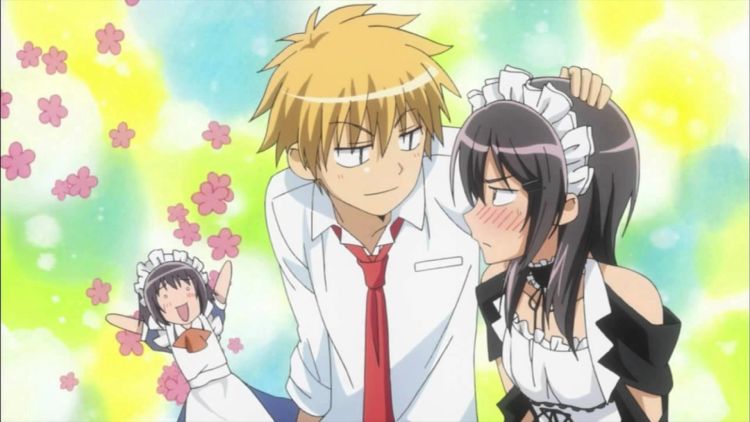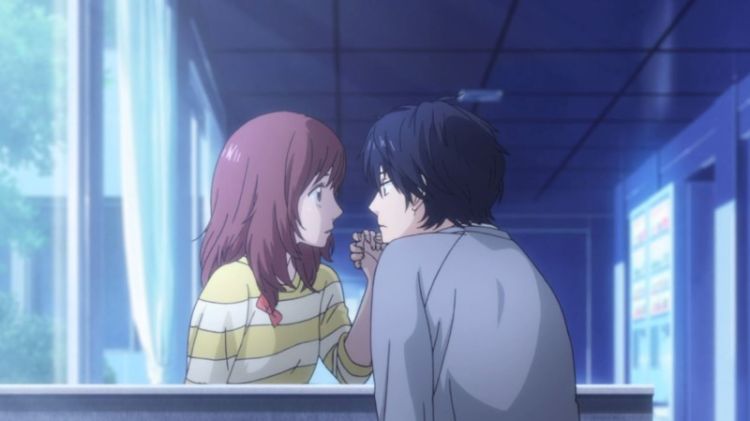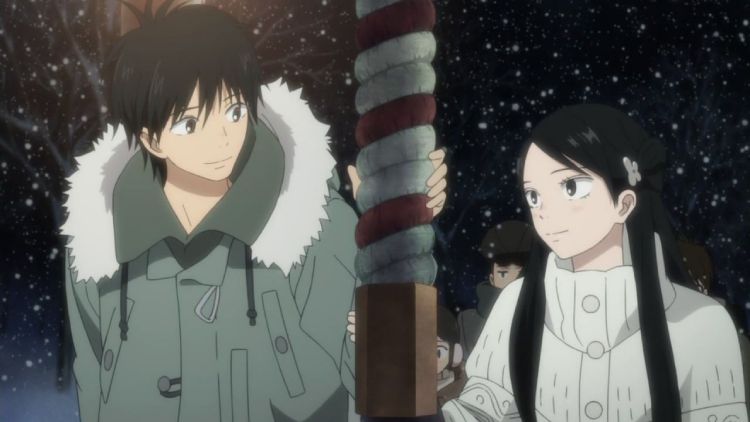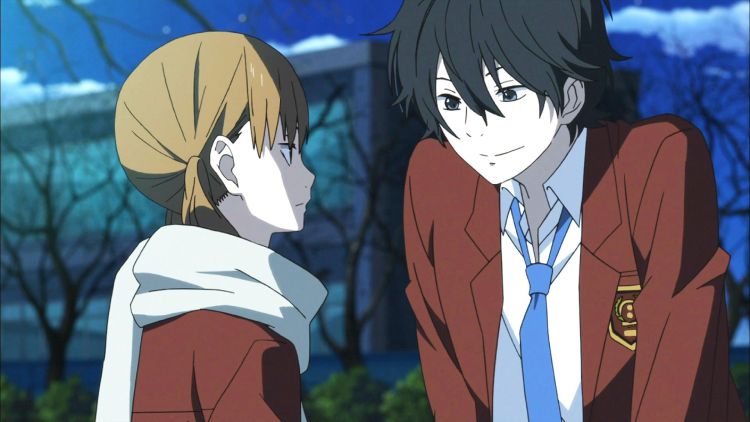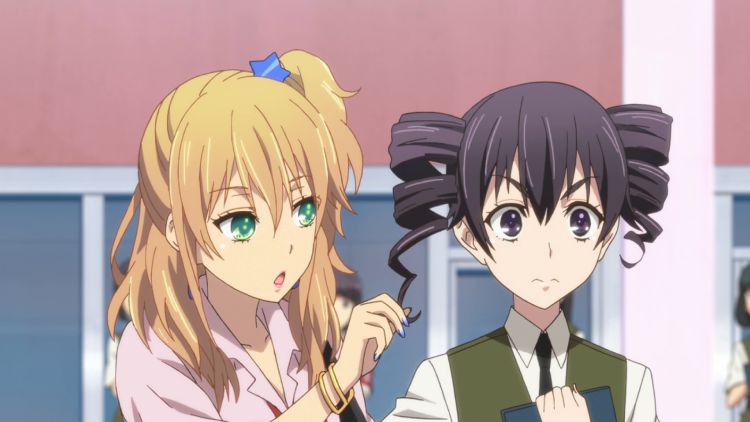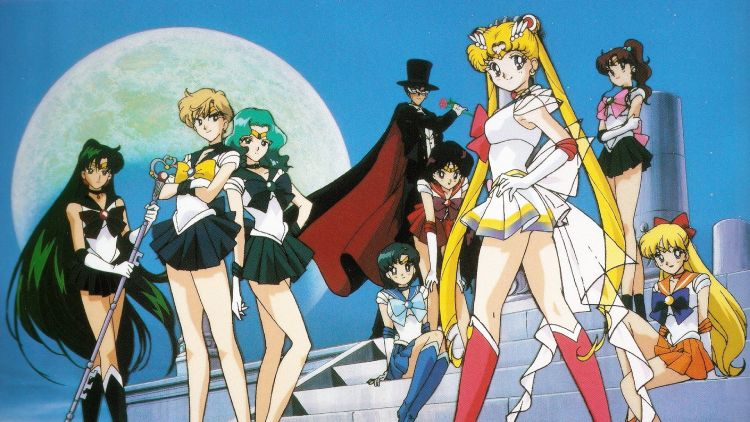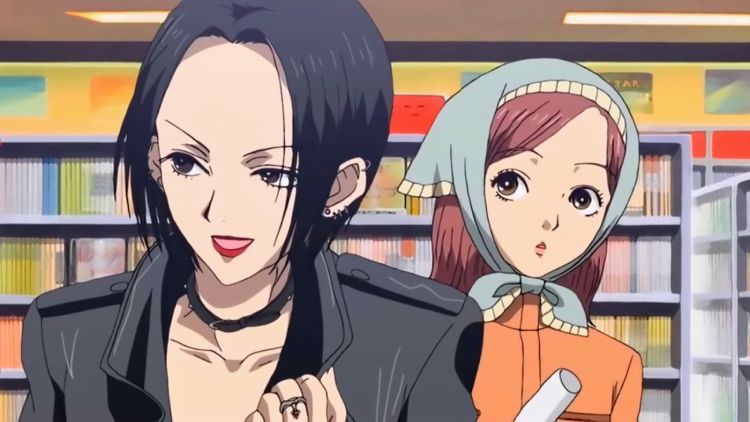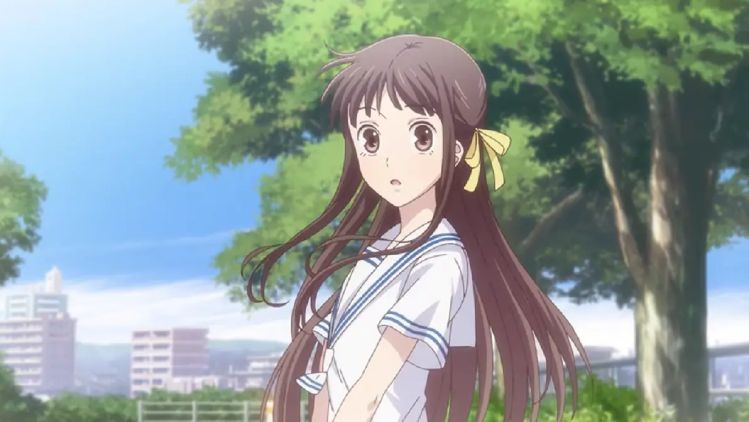If you’ve been watching anime for a long time, you must’ve come across the word ‘Shoujo.’ However, you probably don’t know what this term signifies, which is why you’ve decided to look it up, and that’s why you’re here.
In this article, we will explore the meaning of the term “Shoujo,” what it features, its relation with other genres, especially romance, and the terms Shoujo-ai and Mahou Shoujo. Finally, we will list a few must-watch shoujo anime series.
The Japanese word “shoujo” means “girl,” and it describes all those anime that target females younger than 18 years old. Consequently, shoujo features themes that are coherent with girl interests, such as rom-com, slice-of-life, magic, coming-of-age, relationships & horror, etc.
Though the above paragraph gives a concise shoujo meaning, there is more to this term. So, let’s take a deeper look at what this anime genre is!
What Does Shoujo Mean in Anime?
As mentioned above, “shoujo” means “girl,” and it refers to all those anime that target the demographic range of females younger than 18 years of age. And so, shoujo is not a genre but a diverse group of anime aimed at young girls.
In Japanese tradition, shoujo refers to an ‘unmarried teenage girl.’ Therefore, the term shoujo is associated with “innocence,” “purity,” and “cuteness.”
But nowadays, the Japanese rarely use shoujo outside the context of manga or anime, as they use the word “On’nanoko” to refer to a girl in daily vocabulary.
That said, it’s unclear which anime series should be considered the first-ever shoujo!
Historians agree that the word ‘shoujo’ became associated with girls’ entertainment in 1902 when the first female-exclusive magazine, “Shoujo-Kai,” started publishing manga for young girls.
Though shoujo expanded in written literature, its manga was utterly hampered by WW2 until the 1950s when mangaka Osamu Tezuka revived shoujo through his series Princess Knight.
However, it was Moto Hagio who founded the ‘Modern Shoujo’ by completely eclipsing all previous shoujo artists through her works: The Poe Clan, The Heart of Thomas, and They Were Eleven.
By the 1980s, the shoujo genre featured distinct, beautiful faces with large eyes, lighter tones, and borderless panels. In the same decade, the shoujo genre diverged from the josei genre, a genre that featured manga directed at adult females.
In the 1990s, the shoujo anime genre became really popular with the premiere of Sailor Moon, which went on to become the face of Shoujo.
What Makes an Anime a Shoujo Anime?
Any anime that exclusively targets teenage or early adult females, between 10 and 18 years old, is considered a shoujo title.
Consequently, shoujo doesn’t involve a single genre but a group of genres that interest teenage girls. But that typically involves themes such as coming-of-age, romance, comedy, female friendships, slice-of-life, horror, magic, and sometimes even reverse harem.
However, shoujo is distinguished for its art style with bright colors, large eyes, slender bodies, thin lines, and bright tones. Often, expressions are denoted by chibi figures. That said, shoujo is extremely diverse but still features stereotypical tropes and themes.
For instance, most shoujo protagonists are girls with a particular personality type.
This can be observed in Sawako from Kimi no Todoke, who is brutally honest and sweet but appears horrifying from a distance. Meanwhile, Kyoko from Skip Beat! is a hardworking and formal teenager but has developed a taste for fairytales and revenge.
However, how a shoujo anime’s plot unravels depends on the protagonist’s personality.
For instance, if a female is introverted, the shoujo will start with her having difficulty communicating with others. Such a female usually has a completely opposite image among her peers and has a secret crush on the popular guy.
However, if a protagonist is hyperactive, she usually gets caught in some odd/embarrassing situation by a guy she tries to avoid, only to get entangled further.
In some anime, a girl gets betrayed and learns to accept her feelings. This frequently involves her already friend-zoned best friend becoming a potential love interest.
However, shoujo may feature a somewhat ordinary girl being unaware of her attractiveness and ends up catching the eye of every other male character, thereby giving birth to the “reverse harem” sub-genre within shoujo.
But unlike most harem anime, where the male protagonist settles with nearly every female, reverse harems involve a girl settling with just one character or sometimes none.
Shoujo also deals with family issues and career counseling sessions. But it still concludes on a high note rather than going through bleak realities. However, the shoujo genre is particularly apt in featuring girls encountering the spirit world or horror.
But the description of shoujo so far may have indicated that most shoujo series have some element of romance, love life, and boy problems.
This can start as early as a childhood friend who is that girl’s first love or vice versa. But the guy happens to leave the region, promising to meet her again—for instance, Ao Haru Ride.
Sometimes, the romance can start with the protagonist catching the interest of a high school celebrity or outcast. This may be seen in My Little Monster and Kimi no Todoke.
Are All Shoujo Anime Romance?
Predominantly yes, but not necessarily.
You see, shoujo was built around female protagonists and their interpersonal relationships. By the 1960s, the world was much more family-oriented; girls were shown in family settings and dealing with family problems.
And so, several classic shoujo explored women dealing with conflicts with their parents, especially mothers.
But as society became more secluded, the women became oriented towards their romantic associations. Therefore, most shoujo published in the 1970s or later featured romance.
Since all these anime associated feminine habits with female growth. Consequently, a new genre of ‘magical girls’ featured protagonists suddenly transforming into elite girls with fancy costumes and mature looks.
But even these magical girls aimed to impress that ‘one’ guy and settle with him after marrying him.
However, shoujo’s romance was no longer limited to heterosexual couples. This gave birth to several adult themes, including “Shoujo-Ai.”
What is the Meaning of Shoujo-Ai?
The Japanese word ‘shoujo’ means “girl,” and ‘Ai’ means “love.” So, Shoujo-Ai literally means “Girls’ love.” It describes an anime or manga that features female-female relationships with sexual overtones and ecchi tropes but without explicit sex.
That said, the term “Girls’ love” usually refers to “Yuri,” which features explicit sex between two female characters. However, Shoujo-ai is a mild form of Yuri.
Anyways, the shoujo-ai titles may involve:
- An overdramatic female friendship where the two female characters often tease each other sexually by taking showers together and provocatively touching each other.
- A female-female sexual relationship where sex is often implied or depicted through ecchi, bed sheets, shadows, or some other form of blurring, but never directly.
- A pedophilic relationship where a teenage girl is in love with an adult male, typically a teacher or her friend’s older brother, sometimes even her best friend’s father.
All these scenarios clearly indicate that Shoujo-Ai is more about erotica than actual female problems. Therefore, Shoujo-ai indeed arose from shoujo structures, but it’s not a subgenre of shoujo.
But other genres did arise from “shoujo” and are still considered its sub-genre, such as the “Mahou Shoujo” genre.
What Does Mahou Shoujo Mean?
The Japanese word “Mahou” means “magic,” “witchcraft,” or “sorcery,” while “shoujo” means “girl.” So, Mahou Shoujo literally translates to “Magical Girl.”
It refers to an anime that features a girl of 10-14 years who has feminine features and can use some form of magic to transform into a mature-looking girl with a glittery feminine costume.
Osamu Tezuka’s series Princess Knight is considered the first Mahou Shoujo. But it was the Sailor Moon series that revolutionized both shoujo’s image as well as the ‘magical girl’ genre.
Most magical girl villains are older females. But each fight involves the protagonist defeating the enemy through her cute magical accessories that work only because of her crystal-clean heart and superior friendship powers.
Mahou Shoujo often has romantic tropes. This usually involves the protagonist being in love with some athletic guy who follows her, and they eventually marry as the series concludes.
But the current magical girl anime focuses more on female friendships than a girl’s infatuation with some athletic dude.
Shoujo Anime Examples:
1. Skip Beat!
Megumi Kyoko, a teenage girl, works just to finance a comfortable lifestyle for her childhood friend and love interest, Sho Fuwa, a musician. However, she experiences a traumatic heartbreak when she overhears Fuwa calling her just a maid.
This incites Kyoko to swear revenge by becoming a more famed celebrity herself. Only she must now endure being a flashy “Love Me” member as part of her training to become an actor.
2. Fruit Basket
After her mother dies, Tohru Honda is forced to live in a tent. But she is discovered by her classmate, Yuki Sohma, and his cousin Shigure. As they all come to live together, Tohru discovers a dark secret of the Sohma household. But instead of running away, Tohru decides to help her new family.
3. Kimi no Todoke
Kurunoma Sawako is notorious by the name “Sadako” from the Ring Series because her low-confidence projects her to appear scary. This leads her to be friendless and lonely. But things change when the most popular guy named Kazehaya finds her interesting.
4. Vampire Knight
At Cross Academy, the Day and the Night classes interact only as they switch. But Yuuki Cross and Zero Kiryu must maintain a strict order as members of the disciplinary committee because the Day class doesn’t know that the Night class consists of only vampires.
Though Zero hates vampires, Yuki feels safe around them because of Kaname Kuran, the mysterious pureblood who once saved her from the clutches of hungry vampires.
5. Nana
To Nana Komatsu, love is everything. And so, she has been chasing one crush after another just to find her one true love. Therefore, she boards a train to Tokyo to reunite with her current boyfriend.
But on that train, she ends up sitting next to Nana Osaki, a girl that will do everything for her music career, even give up on love. However, the two namesakes are unaware of how deep their bond will become.
6. My Little Monster
Shizuka Mizutani cares for nothing but her grades. But things change when she is tasked to deliver an assignment to the class freak, Haru Yoshida, who declares her a friend, only to confess his romantic feelings for her later.
As Haru spends more time with Shizuka, she finds his innocence ‘cute.’ But this doesn’t change the fact that she must compete with Haru for her grades.
7. Ao Haru Ride
Being the most popular girl in middle school, Futaba Yoshioka faced jealous female peers who shunned her friendship. Therefore, Futaba has decided to deliberately act unfeminine so she can have female friends.
But things change when her first love, Kou Mabuchi, returns to school after years. As they spend time together, Mabuchi confesses that he was once in love with her, but he is no longer the same person.
Shoujo vs. Other Anime Genres:
Shoujo resembles its male counterpart, Shonen, which targets teenage male audiences in its diversity of themes and appropriateness for young audiences.
Both emphasize strong friendships, the importance of love, and coming-of-age tropes. But both also show romantic comedy and the ‘power of sheer will.’ However, Shoujo has female protagonists, while the Shonen genre typically has only male main characters. Also, Shoujo tends to resolve relationship disputes through dialogue compared to shonen anime which relies on raw fist fights to solve all problems.
And so, Shoujo deals with emotional tendencies while Shonen features physical realities.
Consequently, shoujo-based love stories are much more dramatic, where everyone’s thoughts and feelings are considered. But the love stories in shonen titles are pretty direct and usually featured as side stories rather than the central theme.
This is also mostly true for Seinen, which is the adult version of shonen and targets adult male audiences beyond 18 years of age.
And so, Shoujo seems the least related to the Seinen genre.
However, the characters can grow to transition from one demographic to another. For instance, Brave 10 is a seinen manga, but its sequel, Brave 10 S, was published in shoujo.
But Shoujo is probably the most related to its adult version, Josei, which features anime aimed at adult female audiences.
Both Shoujo and Josei deal with relationships, families, and personal growth. However, Shoujo is mostly about unmarried girls coming to terms with their female identity, while Josei is mostly about adult life after marriage.
But a Shoujo may be about a married couple raising a young child. Meanwhile, a Josei may be about a single female running after her career aspirations.
The difference is about the appropriateness of themes for particular age groups. For instance, Shoujo tends to conclude on bright notes, while Josei is about practical realities, including postpartum depression or struggles with childcare.
Conclusion
In anime, shoujo is not a genre but a demographic featuring all those anime series created for female teenagers. The Shoujo series has various themes and genres, but romance is prevalent. Shoujo has several similarities with Shonen and Josei but least with Seinen.
While Mahou Shoujo or ‘Magical Girls’ is a subgenre of Shoujo, the genre Shoujo-ai or Girls’ Love isn’t considered appropriate for teenage girls. I hope this article helped you understand shoujo meaning in-depth and cleared any of the ambiguities related to it.




